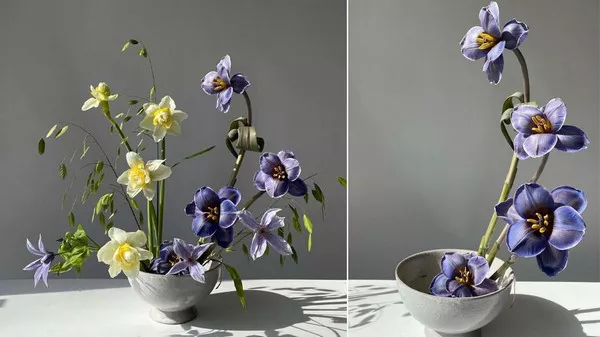Learning the art of pressing flowers may seem intimidating at first, but it’s a skill that can transform the ephemeral beauty of your garden blooms into timeless and enchanting home decor. Penny Ann Schmidt, a botanical artist and owner of “by Penny Ann” in Rialto, California, emphasizes the beauty of bringing the outdoors inside while preserving cherished memories.
Schmidt acknowledges that the process of pressing flowers might be a bit challenging for newcomers, noting that the right preservation method can be elusive. Attempting to press flowers without understanding how a particular plant dries can lead to disappointing results. To ensure your flowers maintain their allure, we consulted Schmidt and other floral experts to explore various methods for pressing flowers effectively.
How to Permanently Preserve Flowers
One of the simplest and most cost-effective methods for pressing flowers is the book method. This approach is ideal for creating your own flower art, and assuming you already have large books, scissors, and your favorite flowers, it’s virtually free. However, Schmidt cautions that not all plants are suitable for the book method, particularly thicker flowers. She recommends selecting smaller or thinner flowers for this technique and advises against using plants that retain a significant amount of moisture, as they may bleed through the pages.
Kate Blott, the creative marketing manager at Atlas Flowers in London, suggests choosing freshly bloomed flowers that are not excessively damp when using the book method. Schmidt favors slender flowers, such as wildflowers, and open-facing varieties like geraniums or coneflowers.
When it comes to selecting books for your flower pressing project, Linda Ruel Flynn, the owner and artist at Flora-Ly in Orange, Massachusetts, recommends old encyclopedias or large dictionaries. These books are ideal because their paper is often uncoated and porous, yielding better results compared to books with coated paper. Phone books can also be used for this purpose. Regardless of the choice, make sure the books are sufficiently heavy. This method of preserving various types of flowers is suitable for flower enthusiasts of all skill levels.
Step-by-Step Guide to Pressing Flowers Using the Book Method
1. Open a book and line it with a single layer of parchment paper. “Choose a book you don’t mind damaging, as there may be some transfer of liquid and color from the flowers,” advises Blott. Schmidt cautions against using paper towels as your absorbent paper, as their pattern can leave indentations in the flowers. Parchment paper is the best option.
2. Arrange your chosen flowers on the parchment paper, ensuring that you lay them out in the desired shape or form for pressing. Avoid overlapping distinct blooms, as suggested by Blott.
3. If your book is large enough, carefully close the page with your flowers and add more pages for additional flower pressing. Be cautious not to over-pack the book, as this can make it difficult to weigh down. After this step, close the book and add more weight on top.
4. For optimal results, Blott recommends allowing the pressed flowers to rest for at least a week to ensure they are fully dried before mounting them for display. Schmidt suggests a two-week waiting period for a secure drying process. The books should be kept in a cool and dry environment. Once the flowers become brittle, it indicates that all the moisture has evaporated, and they are ready for decoration.
By following these expert tips, you can create stunning, long-lasting floral arrangements to adorn your home with the natural beauty of your garden. Pressing flowers is a timeless art that allows you to capture the essence of your favorite blooms and cherish them for years to come.


